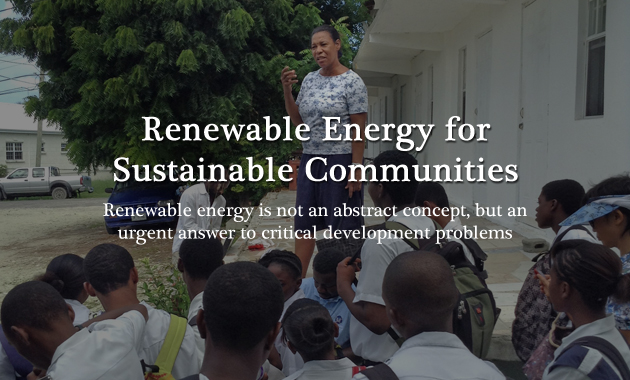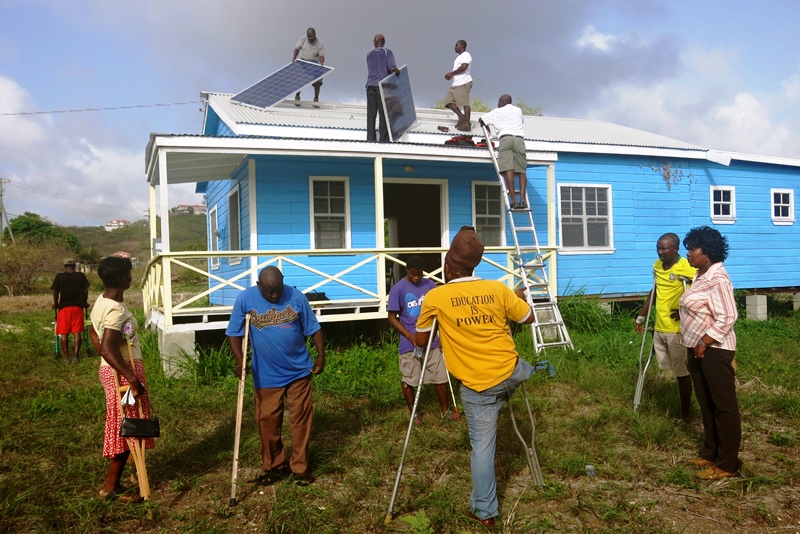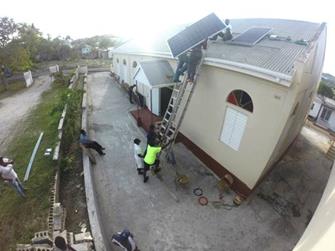- English
- Español
Media Center
Feature

The OAS implements, through the Energy and Climate Partnership of the Americas (ECPA), a small-grant initiative to promote sustainable communities.
In Antigua and Barbuda, Ruth Spencer spearheads a photovoltaic solar project that reduces energy costs in her community.
April 13, 2016
Like many of its neighbors, Antigua and Barbuda has some of the highest electricity prices in the world, with rates several times higher than in the United States, and incomes considerably lower. In light of this challenge, the OAS, through the Energy and Climate Partnership of the Americas (ECPA), launched a small-grant initiative to promote sustainable communities, an opportunity that Ruth Spencer—who leads a community solar project in the country’s capital—seized.
Ruth Spencer knows firsthand the value of solar energy. She owns a 14-unit guest house on the northern coast, where she rents out small apartments to tourists and medical students. Partly because of guests’ heavy reliance on air conditioning, the property’s electricity bills were as high as $3,000 a month. A few years ago, with a grant from the Caribbean Export Development Agency, she was able to install a rooftop solar photovoltaic (PV) system and cut her electricity costs by 75 percent.

For this economist, renewable energy is not an abstract concept, but an urgent answer to critical development problems. “If we don’t convert to green energy, nothing is going to happen here. The poor are going to get poorer, because when people can’t pay their energy bills and have their electricity cut off, their children can’t study in the evening, and they’re more likely to hang out in the streets and get into trouble.” “The thing is,” she added, “we have this free resource. All this sunlight burning us up—we could be using it for good.”
The OAS and ECPA program awards up to $50,000 to support community projects that address some of the challenges of rapid urbanization, with a focus on four priority areas: clean energy; community-based energy efficiency; natural disaster resilience; sustainable transport solutions and waste management; as well as waste-water recycling and management. Richard Huber, who runs the Sustainable Communities in Central America and the Caribbean project at the OAS, said that projects such as the one being implemented in Antigua and Barbuda have a tremendous and multiplying impact on small communities, “even when small grants are awarded.”
From the government’s perspective, the initiative to support these sustainable projects goes beyond the economic benefit and has an impact on people’s mind and awareness in terms of natural resources preservation. Diann Black-Layne, Chief Environment Officer of Antigua and Barbuda, acknowledged that many people have doubts as to the efficiency of solar panels, but “this community solar project is helping to change minds. Every launch event has made local headlines; the impact has been tremendous,” she said.
In fact, Ruth Spencer has become a community leader raising awareness on the benefits of renewable energy and the potential of green jobs. Her experience has opened the eyes of the community on the opportunities that this type of alternative energy provides. “It’s not that people don’t know about solar energy,” she said, but rather that many “didn’t realize that an ordinary person could have access to it.” Today, Ruth has networked, rounded up volunteers, and helped provide solar PV systems for eight small community organizations and churches.
Ruth Spencer’s objective is to target non-profit organizations that are doing good work for the community but don’t have the necessary resources to run air conditioners. Such is the case of the “Vibrant Faith Ministries” church where some members were inspired by the opportunity for hands-on participation and helped install the solar panels on the congregation’s roof.
Although its energy needs were modest, the church was paying about $300 per month in electricity. The solar panels have cut the bill by more than half. That has helped the church’s members understand the potential for savings, even on a small scale.
In 2015, Ruth Spencer was recognized with the Energy Globe Award for her work in solar energy deployment in Antigua and Barbuda. Authorities are currently ensuring that her efforts are not in vain: Black-Lane is putting a multimillion-dollar sustainable island resource framework fund into operation that includes a component to offer accessible loans to low- to middle-income earners for residential solar energy and hurricane-readiness projects. The community solar project headed by Ruth, she concludes, has become the best example of what you can expect to get.
Reference: E-043/16



